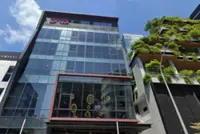KUALA LUMPUR: The Malaysian Automotive Association (MAA) expects vehicle sales to dip fractionally this year, after 2024 hit a record high propelled by growth in passenger car sales.
Yesterday, MAA reported that the total industry volume (TIV) or total vehicle sales in 2024 rose 2.1% year-on-year to 816,747 units, supported by a resilient economy and broad-based improvements across all key economic sectors.
This, MAA said, had led to stronger domestic demand, surpassing the previous TIV high of 799,821 units in 2023.
Projecting TIV to slow to 780,000 vehicles in 2025, which would represent a 4.5% decrease from last year’s record, MAA president Mohd Shamsor Mohd Zain was quick to point out that the 2024 numbers were influenced by a stable socio-political environment in the country.
“These favourable conditions are essential for us in the automotive industry as this would enable Malaysians to be more optimistic of the economy and be willing to spend, including the purchase of vehicles,” he told a press conference yesterday.
It is worth noting that in 2024, the passenger vehicles (PVs) segment recorded an increase in sales, while commercial vehicles (CVs) registered lower sales.
The total registration of new PV’s in 2024 rose to 747,180 units from 719,145 units in 2023, representing a growth of 28,035 units or 3.9%, which was largely due to the strong sales performances by the national brands, particularly Perusahaan Otomobil Kedua Sdn Bhd (Perodua).
As a result, the combined sales of national brands rose to 505,689 units last year, representing close to 62% of the total TIV.
The non-national makes, meanwhile, registered a lower sales of 311,058 units or a 2.3% decline compared to 318,521 units in 2023. On the other hand, the CVs segment registered lower sales of 69,567 units, a decline of 13.8% or 11,109 units.
He said this can be attributed to the removal of diesel subsidy in June 2024 which saw the demand for pick-up trucks reduced by 16.4%.
“The removal of diesel subsidy has somewhat affected the sales of pick-up trucks mainly from the lifestyle customers,” he added.
Perhaps the most interesting statistic is the fact that electrified vehicles (xEV) accounted for 5.6% of the 2024 TIV compared to 4.8% in 2023. Sales of xEV jumped by 19% from 38,214 units in 2023, to 45,562 units with 14,766 units of battery electric vehicle and 30,796 units of hybrid vehicles.
Elaborating on the MAA’s forecast, Mohd Shamsor said the association is targeting 710,000 PVs to be sold this year, a decrease of 5% compared to 2024.
As for xEV, he believes demand will continue to grow this year as 2025 will be the final year for the granting of full exemption of import and excise duties for the import of such vehicles.
On pure electric vehicles (EVs), Mohd Shamsor is of the view that the government may wish to consider extending the exemption of import and excise duties at least to 2030 to continue “nurturing” the nascent industry, especially since it is in alignment with its objective of having EVs contributing to 15% of the TIV in 2030.
“As far as the MAA is concerned, we are obviously continuing to engage the authorities to see how this can be done and hopefully, there will be further developments on the exemption this year,” he said.
That said, he is confident that EVs will see more demand in 2025, especially with the impending subsidy rationalisation of RON95 fuel, heavily expected to be implemented at the beginning of the second half of the year.
Meanwhile, another noteworthy development concerns the implementation deferment of the Excise (Determination of Value of Locally Manufactured Goods for the Purpose of Levying Excise Duty) Regulations 2019, or more popularly known as the open market value excise duty revision on completely knocked down (CKD) vehicles which expired on Dec 31, 2024, with Mohd Shamsor confirming it has been granted a 12-month postponement.
This provided a much needed relief for potential CKD car buyers, but the MAA president acknowledged the concern, nonetheless.
“Based on our understanding right now, the revision will be implemented by January 2026. If that really happens, there will be an average price increase of between 10% to 30% for CKD cars.
“As far as the MAA is concerned, we are now looking into ways on how we can engage further with the government, before the deadline,” he said.
An increase of 10% to 30% is substantial, with Mohd Shamsor predicting that there will be a significant downward spiral effect in the near future, affecting sales volumes especially for CKDs.
“It will also have an impact on our local industry, especially our suppliers. There are many after effects that we are concerned about.
“We will continue to engage them and hopefully we will be able to get some kind of understanding and also an alternative way to overcome this,” he said.
On a separate note, the results announcement event also saw MAA inking a memorandum of understanding with the Malaysia Automotive Robotics and IoT Institute (MARii), to collaborate on organising automotive exhibitions and motor shows on an alternate-year basis.
The partnership will introduce an alternate-year hosting schedule from 2025 to 2028, where MARii will continue to host the Malaysia Autoshow (MAS), while MAA will organise the Kuala Lumpur International Mobility Showcase (KLIMS).
“This collaboration represents a transformative milestone for Malaysia’s automotive industry. By aligning the strengths of MARii and MAA, we are creating a unified, strategic approach to organising automotive exhibitions.
“The alternate-year framework enables us to focus our resources and innovation, ensuring that both MAS and KLIMS become flagship events that highlight Malaysia’s leadership in automotive advancements, policy alignment,and sustainable growth” said MARii chief executive Azrul Reza Aziz.





